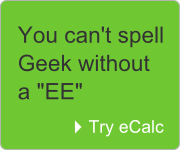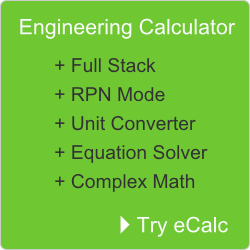|
Transceiver Design
Over the last 15 years, integrated circuit wireless communications transceivers have been the focus of intense research. The wireless revolution that has taken place before our eyes and the advent of inexpensive silicon (CMOS and SiGe) to realize RF circuitry have fueled a zealous quest fo...
Circuit Sage Tools Mathcad routines for RF Circuit Design: S-parameters, parameter conversion, stability, noise, power gain Mathcad routines for RF Circuit Design (.pdf): .pdf of RF circuit design Mathcad routines Mathcad routines for cascaded system design: Noise and linearity calculations for a receiver architecture Mathcad routines for cascaded system design (.pdf):
.pdf of cascaded system Mathcad routines Online Tools MATHCAD/MATLAB Professor Reinhold Ludwig's MATLAB files: From his book RF Circuit Design. Great stuff! Click on M-files on the left frame. SOFTWARE RFSim99: RFSim99 is a free linear S-parameter based circuit simulator offering schematic capture, simulation, 1 port and 2 port S-parameter display and file support, tolerance analysis, stability circles, and much more. Cascade (FREE): Calculate NF, IIP3, Gain of a receiver with cascaded components DASE: $40 block-level simulation tool Agilent's RF Design Environment: RF IC design tool set that plugs into the Cadence environment (ADE) Rfsyscalc Excel tool (FREE): Excel spreadsheet for analysis of a cascaded system APLAC: Tool plugs into Cadence environment Simulink: Communications system simulations using Simulink RF system performance spreadsheet: Calculates basic RF system performance VisSim: Block diagram simulation plug-in for both Mathcad and MATLAB SysCalc6: Windows software, $995, free to try for 21 days Agilent's EEsof tools: Various RFIC design tools including ADS and tools from Eagleware GoldenGate (from Agilent) demonstration in the design of a WLAN transceiver: Using GoldenGate at the block and system levels. WEB TOOLS NF and OIP3 calculators for receiver: Flash-based tool estimates NF and OIP3 for a receiver chain. Free WLAN link budget calculator:
Nice. Estimates link losses, presents theory behind calculations. Online Articles Comprehensive GSM receiver specification paper from UC-Berkeley: Also covers DECT and GPS receivers Accompanying receiver specification spreadsheet: Spreadsheet associated with Berkeley's GSM receiver specification paper RF transceivers papers at UC-Berkeley: Multiple papers and slides on GSM and DECT transceivers Transceiver architectures for wireless ICs: Pros and cons of many receiver architectures. Click on the pdf file so you can see the pictures Milimiter-wave receiver in 90-nm CMOS by Professor Behzad Razavi of UCLA: Great paper discusses issues in realizing the various transceiver building blocks in the 60-GHz band Many papers on transceivers and building blocks, from UCLA: Papers by Professor Behzad Razavi and his students at UCLA Techniques to efficiently optimize a complete wireless receiver: Deals with the long computation times involved in verifying a receiver's performance Class notes from U. of Cincinnati: Class notes from Professor James Caffery's Wireless Communications course Derek Shaeffer's CMOS GPS receiver presentation: 115-mW CMOS GPS receiver in 0.5 um Derek Shaeffer's CMOS Receivers PhD thesis: Very comprehensive document covers various receiver architectures plus demonstration of a CMOS GPS receiver Integrated 24 GHz phased-array receiver: 8-path, 24-GHz receiver demonstrated in 0.18um SiGe Integrated Phased-Array Receivers in Silicon Phd thesis: SiGe 24-Ghz receiver and 77-GHz transceiver demonstrated CDMA transceiver thesis: Very comprehensive document details issues at board and IC level Front-end architectures for CMOS radio receivers: Explores various receiver architectures with an eye on the feasibility of a CMOS implementation Automated receiver design tool: Details a tool that optimizes communications receiver design Fully integrated transceiver in 0.25um CMOS: Presents 1800-MHz transceiver integrated in 0.25um CMOS 5-GHz CMOS Wireless LAN receiver: 2x2 mm WLAN receiver in 0.24-um CMOS A low-cost, low-power receiver: In 0.25-um CMOS, targetting 1-Mb/s, short-range cable replacements 77-GHz phased-array transceiver with on-chip antennas: Part 1: Integrated in 130-nm SiGe BicMOS. Part 1 covers the receiver and the on-chip anttenas 77-GHz phased-array transceiver with on-chip antennas: Part 2: Integrated in 130-nm SiGe BicMOS. Part 2 covers the transmitter and the LO Receivers for Wireless Sensor Networks PhD thesis: 100-kbps, 52-uW receiver for WSNs implemented in 90-nm CMOS operating at 2-GHz Wireless Sensor Network receiver paper in ISSCC 2008: 100-kbps, 52-uW receiver for WSNs implemented in 90-nm CMOS operating at 2-GHz 60-GHz transceiver in 90-nm CMOS: Involved on-chip transmission lines and EM simulations Design and Optimization of UWB front end: Implemented in 0.13-um CMOS. Presents a system optimization technique Many publications from Berkeley Wireless Research Center: Great resource CMOS Software-Defined Radio presentation: Presents feasibility of a CMOS SDR (receiver) that could work between 460 MHz and 5.8 GHz 2.4-GHz CMOS transceiver presentation: Frequency-hopping transceiver for Wireless LAN presented MIMO WLAN Transceiver paper: Integrates two radio paths in SiGe process RF Simulation paper: Comprehensive paper discusses RF circuit simulation challenges and solutions 5-GHz W-CDMA transceiver: Implemented on IBM's SiGe HBT process 65-nm CMOS W-band receiver: 76-92 GHz receiver front-end implemented in 65-nm, general-purpose CMOS Cascaded Noise Figure calculation from RFMD: Simple 50 ohm system. NA to modern Rx archtectures Cascaded IP3 calculation from RFMD: *Extensive* Mathcad routine to design integrated bandgap circuits RFIC course notes from Oregon State: Topics include LNA's, mixers, and impedance matching Transceiver for Wireless Sensor Networks from MIT: 915-MHz transceiver for WSNs, supports 1-Mb/s data rate and fast startup times. Fabricated in 0.18-um Transceiver for WSNs presentation from MIT: 915-MHz transceiver for WSNs in 0.18-um CMOS UWB transceiver paper from MIT and U. of Michigan: 90-nm CMOS UWB transceiver operates in 3-5 GHz bands, features all-digital transmitter Pulse-based UWB transmitters thesis by Professor Wentzloff: Explores pulsed UWB transmitters, implements two transmitters in 3-10.6-GHz band, one in 0.18-um CMOS and one in 90-nm CMOS. The second one uses and all-digital architecture. UWB transmitter dissertation from David Wentzloff: 0.18-um SiGe UWB transmitter and 90-nm ultra-low-power, all-digital CMOS UWB transmitter presented UWB transceivers papers from Professor Wentzloff at U. of Michigan: Useful reference for UWB UWB transceiver system issues paper from MIT: System issues for UWB transceivers operating in the 3-10.6 GHz bands SiGe BiCMOS EIA-485 wireline transceiver that works from -180C to 125C (!!!), thesis from Georgia Tech: Built using IBM's 0.5-um SiGe process, targets circuitry involved in space exploration. The circuits also need to tolerate large radiation doses Low-cost testing and tuning techniques plus adaptive power reduction technique for RF transceivers: thesis from Georgia Tech: Present new techniques to reduce cost and test times of RF transceivers, with OFDM and UWB as specific examples. Also presents a technique to adapatively reduce the power consumption of an RF transceiver that is already on the field by monitoring the received signal quality and environment conditions. Very interesting. Highly linear, low flicker noise direct-conversion receiver for multiband applications: thesis from Georgia Tech: Presents techniques to improve the issues that typically affect direct conversion receivers: linearity and flicker noise. Demonstrates by fabricating LNAs and mixers in a 0.18-um CMOS process. SiGe circuits for UWB thesis from Georgia Tech: Presents LNA, track-and-hold amplifier, and gm-C filter for UWB transceivers, demonstrates in various SiGe technology nodes. Explores response to radiation of high-frequency SiGe circuits. SiGe circuits for communication and radar transceivers: thesis from Georgia Tech: LNAs and other transceiver circuits for X-band (8-12 GHz) radar and milimeter-wave (>30 GHz) applications. Investigates radiation response of SiGe circuits. SiGe transceiver circuits for X and K bands thesis from Georgia Tech: Presents X (8-12 GHz) and K (24 GHz) band phase shifters and mixers and K-band PA for military and automotive applications. Implements in SiGe process. Investigates susceptibility of those circuits to substrate noise and coupling. Wireless clock intra-chip distribution thesis from U. of Florida: Attempts to circumvent issues with clock distribution on ICs by using a wireless clock distribution system. Demonstrates in UMC .13-micron process. Transmitting and receiving antennas separated by 260 microns. Operating frequency is ~18 GHz. Receiver consists of 20-GHz broadband LNA with 4 GHz 3-dB bandwidth plus a programmable divider 3-10 GHz UWB receiver paper from Texas A&M: Implemented in IBM's 0.25-um SiGe BiCMOS, results of receiver encapsulated in commercial QFN package Dual-mode Bluetooth/802.11b receiver paper from Texas A&M: System/architecture considerations and implementation of a dual-mode receiver in 0.25-um SiGe BiCMOS Systematic way to optimize a CMOS receiver: paper from Texas A&M: Presents systematic way to distribute the overall CMOS receiver specifications to the individual receiver blocks RFIC course lecture notes from Texas A&M: RF receivers, LNA's, mixers, VCO's, PLL's, etc. Good stuff. Maxim IC App Notes: Many app notes on wireless IC design and usage Polar transmitters paper: Makes the case for polar transmitters for multi-mode transceivers Receiver Architectures and Signal Processing lecture notes from Tampere University of Technology: Very good presentations on a variety of receiver topics Citeseer: Search over 1 million articles UWB CMOS receiver front-end paper from UC - San Diego: UWB heterodyne CMOS receiver front end works from 3.1 to 8.0 GHz fabricated in Jazz' .18 micron. 0.9-mm^2 5.1 GHz transceiver paper from UC - San Diego: Small-area WLAN transceiver fabricated in IBM's 0.13-micron RF CMOS process MIT OCW lectures on wireless systems' performance: Lectures 19 and 20, very good. Radio Propagation paper from TAPR: Very good. Free space path loss equations, refraction, diffraction, reflection path loss effects on LOS links, propagation issues in non-LOS links. CMOS sub-millimeter wave omponents thesis from U. of Florida: Circuits operating at >100 GHz fabricated in 130, 90, and 45 nm CMOS. Includes on-chip antennas, diode detectors, and a 410-GHz VCO. Details optical measurement technique used to obtain experimental results. Best practices for mixed-signal design and presentation from Alexander Reyes:
Meant for people coming into the industry but seems like a lot of people could use reading this. Books RF Microelectronics by Professor Behzad Razavi: Very good reference The Design of CMOS Radio-Frequency Integrated Circuits by Professor Thomas Lee: "Tom Lee has written a terrific book. Everyone that visits my office wants to borrow it, and I tell them to go buy their own."David Rutledge, California Institute of Technology. Pretty divergent reviews over at Amazon, too, but Professor Lee is really enthusiastic about RFIC's. RF System Design of Transceivers for Wireless Communications by Qizheng Gu: from description:"... This comprehensive reference work covers a wide range of topics from general principles of communication theory, as it applies to digital radio designs to specific examples on implementing multimode mobile systems..." Wireless Transceiver Design by Ariel Luzzatto: from description:"...Readers will learn to master the design, analysis and measurement of important and hard-to-achieve parameters, such as phase noise of oscillators, peak-to-average and linearity of radio-frequency power amplifiers, amplitude and phase balance of quadrature channels and radiated spurious emission..." Modern Receiver Front-Ends by Joy Laskar: from description:"...Describes the actual implementation of receiver architectures from the initial design to an IC-based product * Presents many tricks-of-the-trade not usually covered in textbooks * Covers a range of practical issues including semiconductor technology selection, cost versus performance, yield, packaging, prototype development, testing, and analysis * Discusses architectures that are employed in modern broadband wireless systems ..." Practical RF System Design by William Egan: Very good reviews on Amazon. From description:"...Blending theoretical rigor with a wealth of practical expertise, Practical RF System Design addresses a variety of complex, real-world problems that system engineers are likely to encounter in today%u2019s burgeoning communications industry with solutions that are not easily available in the existing literature. The author, an expert in the field of RF module and system design, provides powerful techniques for analyzing real RF systems, with emphasis on some that are currently not well understood...." Wireless LAN Radios: System Definition to Transistor Design by A. Behzad: Product Description Wireless LAN Radios presents a sophisticated overview of the subject, covering theory while also emphasizing the practical aspects of this promising technology. Coverage includes 802.11 flavors and system requirements; receiver and transmitter radio architectures; analog impairments and issues; key radio building blocks; calibration techniques; case studies; and a brief discussion of 802.11n. It offers a meaningful presentation of real-world issues facing designers, engineers, theorists, and researchers working in this industry. Mead courses in the USA and Europe: Multi-day courses taught in the US and overseas. You might be able to talk the boss into a trip to Switzerland. Besser Associates' courses on RF transceivers and circuit blocks: These courses provide the concepts and techniques that are necessary to understand communication system design at the system block level. RF Circuit Design: Theory and Applications by Reinhold Ludwig: Includes MATLAB CD with routines, very good Production Testing of RF and System-on-a-Chip Devices for Wireless Communications by K. Schaub and J. Kelly: Good reviews on Amazon. From description:"...offers professionals an in-depth overview of cutting-edge RF (radio frequency) and SOC (system on a chip) product testing for wireless communications. The book introduces new, creative methods that lead to more efficient testing, such as multi-site and parallel testing. Practitioners learn how to determine critical measurements for specific applications, including Bluetooth, WLAN, and 3G devices.ContentsIntroduction...." Practical RF Circuit Design for Modern Wireless Systems Vol. II:
Great reviews on Amazon, including one by Guillermo Gonzalez. |

| Login | Sign Up | Invite | Feedback |





